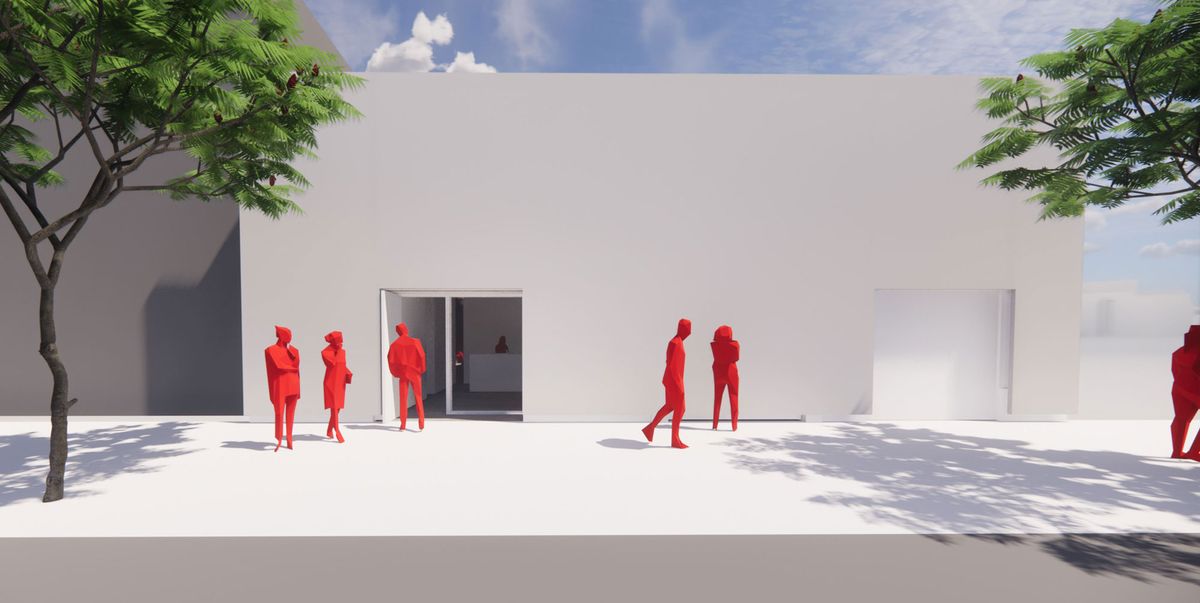Long one of the most closely watched alternative art spaces in Los Angeles, LAXART has seemed a little sleepy lately. Since Hamza Walker took over as director in 2016, the number of annual exhibitions has dropped. The pandemic, which closed down the space for more than a year, did not help. But Walker has been working behind the scenes on two fronts that promise to give LAXART a new lease on life. He is co-organising an ambitious, hot-button exhibition for autumn 2023 that will feature around 17 recently decommissioned Confederate monuments and contemporary artists’ responses to them. And he has finalised the purchase of a new building set to open in October, with a $5m capital campaign underway to support the move.
The new space, a former furniture showroom, is located in an up-and-coming neighborhood that is known, at least by those marketing LA neighborhoods, as Melrose Hill. Gallery Morán Morán is already there, with Sargent’s Daughters and David Zwirner opening soon. LAXART currently leases its space in Hollywood, which will close in June.
“Being able to own our own space is huge,” Walker says. “I don’t think you can overstate its importance economically but also psychically—laying down some roots and committing to a future that isn’t hand to mouth,” he says, before adding: “Well, it will always be hand to mouth to some degree, that’s the nature of nonprofits. But this takes a huge weight off.”
The artist Glenn Ligon, one of a handful of new trustees that Walker has brought on to the board, says in a statement: “This is more than just a new building. It is a blank canvas that will allow us to give artists the freedom to experiment with new formats and develop innovative public programmes.”
Under its founding director, Lauri Firstenberg, LAXART had a history of setting up roots in low-rent or offbeat neighbourhoods and helping to establish them as art centres. First, she set up shop in Culver City in 2005 before galleries rushed in, and in 2014 she moved to Hollywood before that area took off. Walker says he expected a serious rent hike there in 2024, suggesting that the nonprofit could have become a victim of its own success, effectively pricing itself out of the neighborhood.
As for the monuments show, which will be held at the Geffen Contemporary venue of the Museum of Contemporary Art (Moca) in Los Angeles, it will include both new commissions and existing artworks that confront the legacy of American slavery and racial oppression. As examples of the latter, Walker cites Hank Willis Thomas’s upended version of the “General Lee” car from The Dukes of Hazzard TV series and Andres Serrano’s Ku Klux Klan photographs. Walker is organising the show with the artist Kara Walker (“no relation, that they know of,” notes the LAXART website) and Bennett Simpson, a senior curator at Moca.

LAXART has purchased one of the decommissioned Confederate statues for the show, a 1921 Charles Keck bronze sculpture of Stonewall Jackson Photo: Ari Marcopoulos
So far the team has purchased one Confederate statue and secured loans to borrow 14 more, but it has not been easy. Their request to borrow a statue of the US vice-president John C. Calhoun in Charleston, South Carolina, made headlines as the heirs are trying to block it from leaving the state (a court ruling is pending) and in other cities the approval process required working with multiple government agencies.
“The issue is stewardship. These monuments might have come down, but municipalities are still figuring out who has stewardship over these objects,” Walker says, just scratching the surface of what makes this show so politically loaded.


